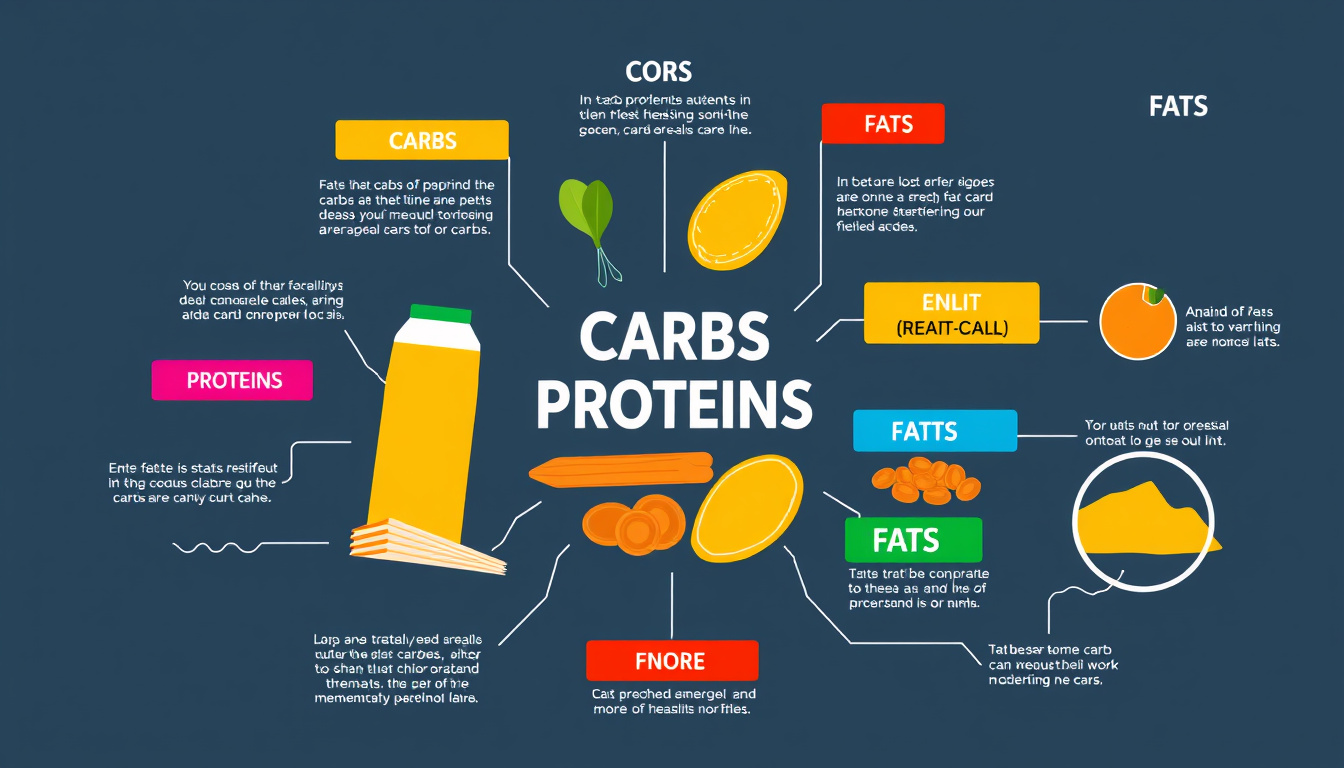In the pursuit of a healthier lifestyle, we focus on macronutrients.
Macronutrients are the food parts your body needs in large amounts. They fuel tasks, build your body, and keep you well.
If you run, lift, or just want to care for your diet, know your macronutrients.
In this guide, we define macronutrients, name their types, show their jobs, and give hints on how to mix them well for a better life.
What Are Macronutrients?
Macronutrients supply the energy your body needs.
They come as carbohydrates, proteins, and fats.
Water is vital too, but it falls in another group. It does not carry calories.
The name "macronutrient" means your body asks for these in big amounts versus nutrients like vitamins and minerals.
Knowing macronutrients well helps you plan meals that fit your energy, muscle, and health needs.
The Main Types of Macronutrients and Their Functions
1. Carbohydrates
Carbohydrates stand as the key energy source for your body.
Your body breaks them into glucose to run cells and fuel your moves.
You find two types:
- Simple carbohydrates: In sugars, honey, and dairy.
- Complex carbohydrates: In whole grains, beans, vegetables, and fruits.
• Function: They supply quick energy and steady power. They help brain and gut work well.
• Calories per gram: 4 kcal
2. Proteins
Proteins build and fix body parts.
They make enzymes, hormones, and support your immune system.
Proteins are built from amino acids, the small parts that your body uses to grow.
• Sources: Meat, fish, eggs, dairy, beans, nuts, and seeds.
• Function: They support muscle growth and keep cells strong.
• Calories per gram: 4 kcal
3. Fats
Fats pack dense energy.
They help build hormones, maintain cell walls, and keep you warm.
Fats help absorb vitamins A, D, E, and K.
You can find many kinds:
- Unsaturated fats: In olive oil, nuts, and avocados.
- Saturated fats: In meat fats and some tropical oils; these are best kept low.
- Trans fats: In processed food; these are best left out.
• Function: They provide long-lasting energy, build cell parts, and help move nutrients.
• Calories per gram: 9 kcal
Why Balancing Macronutrients Matters
Your body needs a good mix of macronutrients for weight control and health.
Too many carbohydrates or not enough protein can cause problems.
For example:
- Extra fats when you sit a lot can add weight.
- Low protein can slow repair and muscle upkeep.
- Too many simple carbs may spike blood sugar and drop your energy.
The right mix depends on your age, exercise, and health goals.
How to Determine Your Macronutrient Needs
First, find your total daily energy use. This count mixes your rest rate and your moves.
Once you see that number, spread your calories among the three groups based on your goal:
• For general health: 45–55% carbs, 20–35% fats, 10–35% protein.
• For muscle gain: More protein near 25–30%, and adjust the other two groups.
• For weight loss: Lower overall calories while keeping enough protein to guard muscle.
A diet expert can help you shape a plan that fits you.
Practical Tips for Incorporating a Balanced Diet
Mixing macronutrients in your meals does not need to be hard. Here are some steps:
• Eat whole foods. Pick fresh vegetables, fruits, whole grains, lean meat, and good fats.
• Choose fiber-rich carbs. Go for whole grains, beans, and vegetables.
• Use lean proteins. Try chicken, fish, tofu, or beans.
• Hold onto healthy fats. Add nuts, seeds, olive oil, or avocados.
• Cut back on processed food. Skip trans fats and too much sugar or salt.
Sample Daily Meal Plan (Balanced Macronutrient Mix)
| Meal | Food | Macronutrient Focus |
|---|---|---|
| Breakfast | Oatmeal with berries, nuts, and a boiled egg | Carbohydrates, Protein, and Good Fats |
| Lunch | Grilled chicken salad with olive oil dressing and quinoa | Protein, Good Fats, and Complex Carbs |
| Snack | Greek yogurt with honey and almonds | Protein, Good Fats, and Carbohydrates |
| Dinner | Baked salmon, roasted vegetables, and brown rice | Protein, Good Fats, and Complex Carbs |
Common Myths About Macronutrients
• "Low-carbohydrate plans are the only way to lose weight."
Not so; your overall calorie count and mix matter more.
• "Fats make you gain weight."
Good fats support health; any excess calorie can add weight.
• "High protein diets hurt you."
They work well for most. If you have kidney issues, talk to your doctor.
FAQ About Macronutrients
Q1: What daily amounts work best?
A1: A mix of about 45–55% carbohydrates, 20–35% fats, and 10–35% protein usually fits health guides.
Q2: How do I mix my macronutrients for weight loss?
A2: Keep a lower calorie count and add enough protein (roughly 1.6–2.2 grams per kg of body weight) along with carbs and fats.
Q3: Can I get all macronutrients from plants?
A3: Yes. Beans, nuts, seeds, whole grains, and vegetables can give you plenty of macronutrients for a plant-based plan.
The Role of Learning and Tracking
Learning about macronutrients is a steady task.
Track your meals and watch your progress.
Using food log apps can help you keep on track and meet your goals.
Conclusion: Take Charge of Your Food Choices Today
Knowing more about macronutrients can change the way you eat and feel.
Balance does not mean strict limits. It means making clear choices that work for your life, energy, and long-term health.
Start with small steps—plan meals to include all the main food parts—and see better health over time.
Make your choice now—gain knowledge and take control of how you eat.
For a plan that fits you, meet with a diet expert who can build a path that suits your needs.
References:
- World Health Organization. (2020). Healthy diet. https://www.who.int/news-room/fact-sheets/detail/healthy-diet




